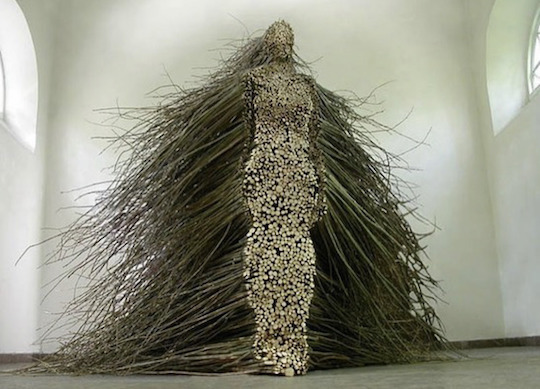#Anderegg
Explore tagged Tumblr posts
Text


Flying Dog Lady and Tangerine Thief by Wesley Anderegg
2 notes
·
View notes
Text
what are you going as?
Halloween Post

Amanda Rachels
::

opéra côté costume - opéra national de paris
::

Olga Ziemska - the woman made from willow branches
::

Edda Gimnes
::

spiderweb fashion dress
::

David Oliveira
::

Sasha Vinci
::

Franco Anselmi - Arab man
::

neighborhood watch
::

Jean-Michel Basquiat
::

Pablo Picasso
::

Harajuku fashion
::

Pierre Le Gall
::

Riccardo Maria Chiacchio stylist
::

Wesley Anderegg
::

GI Donnie
::
Wednesday: Indigenuity
3 notes
·
View notes
Photo








Ceramic plates by Wesley Anderegg.
"I have always been a people watcher. In the first grade I did not play with the other kids. I stood back and watched. And I have been watching ever since. I watch what people do and imagine what they might like to do.Life and society are such that we cannot always say and do what we like. However, in the imaginary world in which my ceramic people live, they can.At the dawn of mankind primitive peoples fashioned clay objects. They sculpted about what they knew and wanted. Pregnant women and animals were the hot topics of the day. I think of my work much the same way. Though the topics may be different I feel a link to those old people sitting around playing with this beautifully plastic material."- Wesley Anderegg
https://artaxis.org/wesley-anderegg/
https://www.wesleyanderegg.com/about
8 notes
·
View notes
Text
Mapping Festival 2023 Celebrates Low Tech Art

The highly anticipated Mapping Festival 2023 is set to take place from May 18th to Sunday, May 28th, with a particular emphasis this year on low tech art. The outdoor event will be held at Jardin des Nations, offering audiences a unique experience to engage with performances that ingeniously use salvage and human energy as a source of creativity. In keeping with the low tech theme, the festival will showcase works that are low-carbon and environmentally friendly, providing a platform for artists who create minimal impact on the environment. The musical line-up will be hosted on a small stage built from local wood, constructed in association with La Barje, a community organization already present on the site. A notable highlight of the festival is the Salle de Sonance, an immersive sound space imagined by Alican Okan and constructed by the MelUsine collective using reclaimed wood from the site. Alican Okan, a composer and sound artist from Istanbul, is known for his passion for creating instruments from recycled materials. The MelUsine collective aims to train individuals to be autonomous and foster a sense of community through shared skills and services. Geneva-based artist Thierry Anderegg will showcase his remarkable sculptures, “The Fitness Monster” and “La Macchina Infernale”, which are animated by human strength. His work echoes the bizarre and humorous style of Swiss artist Tinguely, incorporating elements of science fiction and engaging audiences through an interactive ballet of movement, sound, and light. The festival also features a unique electro-solar concert by DJ Nøs and Antoine Meissonnier. DJ Nøs will utilize a bicycle-cargo-sound system powered by photovoltaic panels, while Antoine will interactively project captured light objects in sync with the music. This collaborative performance promises to be a sensorial feast, merging Antoine's textured visuals with Nøs' contemplative sounds. Renowned artist Oilhack is set to perform live, creating a stunning spectacle of color using his world-famous oils, while Troffea Bahn will take attendees on a psychedelic journey with his acid techno DJ sets. For children, an interactive upcycling workshop called “Joue à ton rythme” provides an intuitive approach to music, encouraging participants to create their own instruments from everyday objects. In a collaboration with Out of the Box & Cap Loisirs, the festival will present "Triphonie", an inclusive concert created by visual artists, amateur musicians, and professionals, with and without disabilities. The performance is set to offer a sensory experience that may hold some surprises for audiences. Rounding off the festival will be the performance "Demystifying the Æther" by Félicien Goguey and Matthias Hurtl, a culmination of a five-day workshop exploring electromagnetic waves. This year's Mapping Festival promises to be an unforgettable celebration of low tech creativity, offering a diverse lineup of performances, installations, and workshops that blend art, music, and technology in unique and environmentally-friendly ways. The Mapping Festival 2023 is not only a platform for established artists but also encourages budding creators to showcase their talent. The “VJ Contest” is a testament to this spirit, where new artists are invited to take part in a live visual performance competition. The contestants will be evaluated by a panel of seasoned professionals in the field. This exciting event ensures the festival's commitment to fostering creativity at all levels. For those interested in acquiring new skills, the festival has arranged a series of educational programs. Workshops focusing on low tech tools and methods will be conducted by artists like Alican Okan and Félicien Goguey. These hands-on sessions will provide attendees with the opportunity to explore the creative possibilities of low-tech art and its potential for environmental sustainability. The festival also acknowledges the importance of critical discussions in the field of art and technology. A series of round tables will provide a space for dialogue and debate, where artists, researchers, and the public can discuss various topics related to the intersection of technology, art, and society. The evening performances will be a sensory delight, with the festival grounds turning into an arena of interactive light and sound installations. Among these, the 'Interactive Fire Garden' by Cie Carabosse promises to be a crowd-puller. It's a magical installation where fire becomes a medium of art, bringing warmth, light, and a unique beauty to the space. The festival finale is a spectacle not to be missed. The closing party features artists such as DJ Windows XP, Kassiel, and Oilhack, promising a night filled with vibrant music and visuals. Attendees will have the opportunity to dance the night away, surrounded by the immersive, low tech art that has defined the festival. True to its core theme of low tech art, Mapping Festival 2023 is set to provide attendees with a unique blend of art and technology. Its focus on environmental sustainability and inclusivity makes it a significant event on the cultural calendar. By providing a platform for artists who push the boundaries of creativity while minimizing environmental impact, the festival sets a precedent for future cultural events.
Conclusion
The Mapping Festival 2023 aims to create an immersive, innovative, and engaging art experience while raising awareness about environmental sustainability. It's an invitation to all to come and explore the limitless potential of creativity when it's harmoniously combined with a commitment to our planet. Read the full article
#AlicanOkan#CieCarabosse#digitalartfestival#DJWindowsXP#environmentalsustainability#FélicienGoguey#interactiveinstallations#lowtechart#MappingFestival2023#VJContest
2 notes
·
View notes
Text
to prove the harm of AI here are some links
there are plenty more too.
proship community reblog if you hate AI
#proship#proshippers please interact#proshippers#proship community#antis dni#proshippers are valid#proshipper safe#anti ai#fuck generative ai#fuck ai#fuck chatgpt#ai bullshit#ai nonsense
413 notes
·
View notes
Text
God’s Whistleblower
The eyes of the LORD are in every place, keeping watch on the evil and the good. Proverbs 15:3 (ESV)
When Jesus saw what was happening, he was angry with his disciples. He said to them, “Let the children come to me. Don’t stop them! For the Kingdom of God belongs to those who are like these children.“ Mark 10:14 (NLT)
Each of you must know how to control his own body in holiness and honor. 1 Thessalonians 4:4 (BSB)
Take no part in the unfruitful works of darkness, but instead expose them. Ephesians 5:11 (ESV)
You snakes! You brood of vipers! How will you escape being condemned to hell? Matthew 23:33 (NIV)
The iniquities of a wicked man entrap him; the cords of his sin entangle him. Proverbs 5:22 (BSB)
The Righteous One knows what is going on in the homes of the wicked; he will bring disaster on them. Proverbs 21:12 (NLT)

There is no darkness or deep shadow where the workers of iniquity can hide. Job 34:22 (BSB)
0 notes
Text
Industrial Waste Teapot, 1999

Wesley Anderegg expresses his concern for the environment in Industrial Waste Teapot. Four figures wearing gas masks sit on top of what appears to be a corroding metal barrel. Each figure holds a book, a bomb, a Geiger counter, or a bug sprayer. The handle and spout have been molded to look like a pipe, while the lid of the pot is capped with a skull and bones. By placing these symbols on a pot that holds a liquid we will ingest, Anderegg conveys the idea that pollution not only contaminates the air around us but also makes its way into our bodies.
-Smithsonian American Art Museum
0 notes
Text
Miss World America 2023 predictions: Leikyn Bravo, Maria Cepero, Sukhman Cheema
The Miss World America 2023 coronation ceremony will be held at the Meydenbauer Theater in Bellevue, Washington, United States on October 5, 2023. It is the 71st edition of the national beauty pageant that selects the Miss World candidate of the U.S. and its first edition under its new national directors Sanjay Saini and Ekta Saini. On October 16, 2020, Alissa Anderegg of New York was crowned…

View On WordPress
#American beauty pageants#American beauty queens#Leikyn Bravo#Maria Cepero#Miss World#Miss World America#Shree Saini#Sukhman Cheema
0 notes
Text
Fwd: Other: NewPhytologist.TansleyMedal.Nominations
Begin forwarded message: > From: [email protected] > Subject: Other: NewPhytologist.TansleyMedal.Nominations > Date: 27 September 2023 at 08:25:17 BST > To: [email protected] > > > Are you, or do you know, an early career scientist who has made an > outstanding contribution to plant science? > > The New Phytologist Tansley Medal is a prestigious prize, awarded annually > to early career scientists that have made an outstanding contribution > to plant science. > > Winners receive �2000 (GBP) and their work is highlighted in New > Phytologist. > > 'The Tansley Medal is an opportunity to super-charge your career.' > > * Tansley Medal winner Jana Sperschneider, Senior Research > Scientist, CSIRO > > The deadline is 1 November 2023. Find out more here: > https://ift.tt/piA5d8w > > Hear from recent Tansley Medal winners in New Phytologist Now, our free > webinar series: > > * 19 October: Leander Anderegg > * 23 October: Moi Exposit-Alonso > > Register here: https://ift.tt/lr5d3F6 > > > Dr Mike Whitfield (he / him), Development Coordinator > The New Phytologist Foundation | > Registered charity number 1154867 > Twitter & Instagram: @newphyt | Facebook: fb.com/NewPhytologist > > Dedicated to the promotion of plant science > > > "Whitfield, Mike (whitfiel)"
0 notes
Text

salt and pepper shakers by Donna and Wesley Anderegg
1 note
·
View note
Text
MAD HEIDI - Review
DISTRIBUTOR: Raven Banner Releasing

SYNOPSIS: Switzerland is a dystopian society as it has fallen under the rule of an evil, fascist cheese tyrant. Still, Heidi manages to live a pure and simple life in the Swiss Alps. Her grandfather Alpöhi tries to protect her, but Heidi is older now and her desire for freedom lands her in trouble with the dictator’s henchmen. When she is pushed too far the innocent Heidi is transformed by an order of warrior nuns and she sets out for revenge and to liberate her country from the abominable cheese fascists.
REVIEW: In much the same way filmmaker Rhys Frake-Waterfield mutated the Winnie-the-Pooh story into a slasher film, Johannes Hartmann and his Swedish filmmaking team transform the classic tale by Swiss author Johanna Spyr into a contemporary exploitation full of blood, gore and cheese.
The plot for MAD HEIDI has everything you’d expect, a few surprises, and its fair share of good and bad onliers. Clearly there is a lingering Nazi influence, although it is never said. President Meili has a dream of creating a new cheese formula that will lead them to world cheese domination and many gags and jokes are spun around that idea. The bad guys are bad, the scientists evil, the good guys laugh in the face of death, and there is a montage, music and all, as Heidi is transformed by the nuns into an epic warrior. For an exploitation film, the story puts a lot there and checks all the boxes. The satire is nicely crafted and entertaining. I had a few chuckles, but no deep belly laughs. It had plenty of off color moments, rue to the exploitation spirit, and I never found it overtly offensive.
The film has that 70’s exploitation look, a gritty Technicolor look, with a framing and editing style to match the pictures of the genre. The effects, a bit smaller and more condensed than a Hollywood blockbuster, look fantastic, wonderfully executed, and nicely choreographed. There are those moments that capture the look and feel of the classic exploitation style, but it feels like something like Robert Rodriguez or Quintin Tarrantino’s contemporary take on the genre. Woven into the mix is a great score by composer Mario Batkovic. His composition delightfully accents the visuals of the film that pays homage to the exploitation films but also the playfulness of the Heidi films.
I loved this ensemble cast. Alice Lucy is magical as Heidi. Her performance does an excellent job of blending the warrior with the innocence of character. Max Rüdlinger is the quintessential henchman as Kommandant Knorr and actor Pascal Ulli is fabulous as the made cheese scientist. Veteran actor Casper Van Dien enters the story as President Meili. Its a quirky performance with a bizarre accent and at times you feel he might break the fourth wall but it never quite happens. The important thing is you perceive everyone is having fun with the material and they add a lot of energy to the film.
MAD HEIDI is no “Blazing Saddles,” but it is a satisfying guilty pleasure that delivers on everything you would expect it to, including expectations for the trailer. The cast has a lot of fun with the characters and material as the filmmakers elevate the look and feel of the film. This entertaining film is a rare event that should be viewed in a theater with an audience, and if you’re lucky enough with a few beers and a cheese plate. I can’t wait to see what these filmmakers serve up next.
CAST: Alice Lucy, Max Rüdlinger, Casper Van Dien, Almar Sato, David Schofield, Kel Matsena, Pascal Ulli, Katja Kolm, Werner Biermeier, and Andrea Fischer-Schulthess. CREW: Director/Screenplay - Johannes Hartmann; Screenplay - Sandro Klopfstein, Gregory D. Widmer and Trent Haaga; Producer - Valentin Greutert; Cinematographer - Eric Lehner; Score - Mario Batkovic; Editors - Jann Anderegg, Claudio Cea, and Isai Oswald; Production Designer - Myriam Kaelin; Costume Designer - Nina Jaun; Special Effects - Valentin Altorfer, Fabian Luscher, and Julia Morf; Special Makeup Effects - Daniel Steffen, Claudio Raho, David Scherer, Tanja Koler, and Dana Hesse. OFFICIAL: madheidi.com/en-us FACEBOOK: facebook.com/madheidimovie TWITTER: twitter.com/madheidimovie TRAILER: https://youtu.be/YbwaAybeImE RELEASE DATE: Special one-night engagement In Theaters June 21st, 2023, at Fathom Events
**Until we can all head back into the theaters our “COVID Reel Value” will be similar to how you rate a film on digital platforms - 👍 (Like), 👌 (It’s just okay), or 👎 (Dislike)
Reviewed by Joseph B Mauceri
#film review#movie review#mad heidi#Raven Banner Releasing#johannes hartmann#alice lucy#casper van dien#Almar Sato#horror#exploitation#swissmade#heidi girl of the alps#joseph mauceri#joseph b mauceri
1 note
·
View note
Text
Incorporation des nouvelles et nouveaux sapeur(e)s 2023, nominations de 3 sous-officiers et 6 chefs de section. I Image source : @sdis_valtra Incorporation des nouvelles et nouveaux sapeur(e)s 2023, nominations de 3 sous-officiers et 6 chefs de section. I Image source : @sdis_valtra Incorporation des nouvelles et nouveaux sapeur(e)s 2023, nominations de 3 sous-officiers et 6 chefs de section. I Image source : @sdis_valtra Incorporation des nouvelles et nouveaux sapeur(e)s 2023, nominations de 3 sous-officiers et 6 chefs de section. I Image source : @sdis_valtra Incorporation des nouvelles et nouveaux sapeur(e)s 2023, nominations de 3 sous-officiers et 6 chefs de section. I Image source : @sdis_valtra Incorporation des nouvelles et nouveaux sapeur(e)s 2023, nominations de 3 sous-officiers et 6 chefs de section. I Image source : @sdis_valtra Incorporation des nouvelles et nouveaux sapeur(e)s 2023, nominations de 3 sous-officiers et 6 chefs de section. I Image source : @sdis_valtra Incorporation des nouvelles et nouveaux sapeur(e)s 2023, nominations de 3 sous-officiers et 6 chefs de section. I Image source : @sdis_valtra Incorporation des nouvelles et nouveaux sapeur(e)s 2023, nominations de 3 sous-officiers et 6 chefs de section. I Image source : @sdis_valtra Incorporation des nouvelles et nouveaux sapeur(e)s 2023, nominations de 3 sous-officiers et 6 chefs de section. I Image source : @sdis_valtra La cérémonie qui a officialisé l’incorporation des nouveaux sapeurs-pompiers au sein du service de défense incendie et de secours du Val-de-Travers (SDIS) s’est déroulée le samedi 10 juin dernier à Fleurier. Elle a également été l’occasion de remercier et de promouvoir trois sous-officiers à un grade supérieur et six chefs de section. Samedi 10 juin dernier, une matinée de formation complémentaire liée au matériel spécifique de notre région a mis un terme à la formation de base suivie au centre de formation de l’Etablissement cantonal d’assurance et de prévention (ECAP) et à l’interne du service de défense incendie et de secours du Val- de-Travers (SDIS). En 2023, un nombre important de recrues incorporées en début d’année ont suivi ces cours, il s’agit de : Laureline Anderegg, Maxime Aubert, Yannick Balisson, Alice Boileau, Antonio Gavinhos Marques, Maria Inês Da Silva Pereira, Lucas Ellenberger, Amélie Huguelet, Séverine Jacot-Descombes, David Koller, Anaïs Reboux, Léa Robert-Tissot, Raphaël Schaffo, Launora Sejdiu, Vanessa Vaudel et Piotr Zimoch. Deux nouveaux sapeurs-pompiers déjà formés, Lydia Tajes et Bastien Vaucher, ont également été incorporés samedi dernier. Trois personnes doivent encore accomplir la formation ECAP en 2024 pour être pleinement opérationnelles : Ylan Daniel, Jonalphy Lopez Pereira et Kerian Lüthi. Les 21 nouveaux sapeurs-pompiers ont été informés de la gestion des alarmes et de leur comportement en intervention. Cette cérémonie a également été l’occasion de féliciter et de remercier les appointé·es Meri Besson, Gilles Besson et Arnaud Zumstein qui ont suivi avec succès le cours de chef de groupe et qui ont été nommé·es au grade de caporal. A la suite d’un processus de sélection, plusieurs personnes ont également été nommées à la fonction de chefs de section à savoir : le premier-lieutenant Kevin Brocard, le premier-lieutenant Pascal Isler et le lieu- tenant Laurent Gossauer au sein du détachement de premiers secours 2 (DPS 2), le caporal Damien Walther et le premier-lieutenant Cédric Matthey au sein du DPS 3 de La Côte-aux-Fées et des Verrières et le premier-lieutenant Jean-Marc Vaucher au sein du DPS 3 de Travers. Le Conseil communal et l’Etat-major du SDIS tiennent à chaleureusement féliciter toutes ces personnes pour leur engagement citoyen et leur grand dévouement au service de la collectivité publique vallonnière.
0 notes
Text
Lifestyle factors associated with inflammatory bowel disease: data from the Swiss IBD cohort study | BMC Gastroenterology
We wish to thank all the IBD patients, their mothers and friends for completing the questionnaires. Members of the SIBDCS Study Group: Karim Abdelrahman, Gentiana Ademi, Patrick Aepli, Amman Thomas, Claudia Anderegg, Anca-Teodora Antonino, Eva Archanioti, Eviano Arrigoni, Diana Bakker de Jong, Bruno Balsiger, Polat Bastürk, Peter Bauerfeind, Andrea Becocci, Dominique Belli, José M. Bengoa, Luc…
View On WordPress
0 notes

